Food groups and serving size – children
Key points about food groups and serving sizes for children
- There are 4 main food groups that provide a variety of fat, carbohydrate, protein, vitamins and minerals for your child.
- Healthy eating is important as they need a variety of foods to support their wellbeing, growth and development.
- The recommended serving size for each food group is different for different ages and genders.
- Eating the recommended number of serving sizes of each food group each day is the best way for your child to get all the nutrients they need.
- To prevent choking, you may need to change the size and/or texture of certain foods to make them safe for young children.
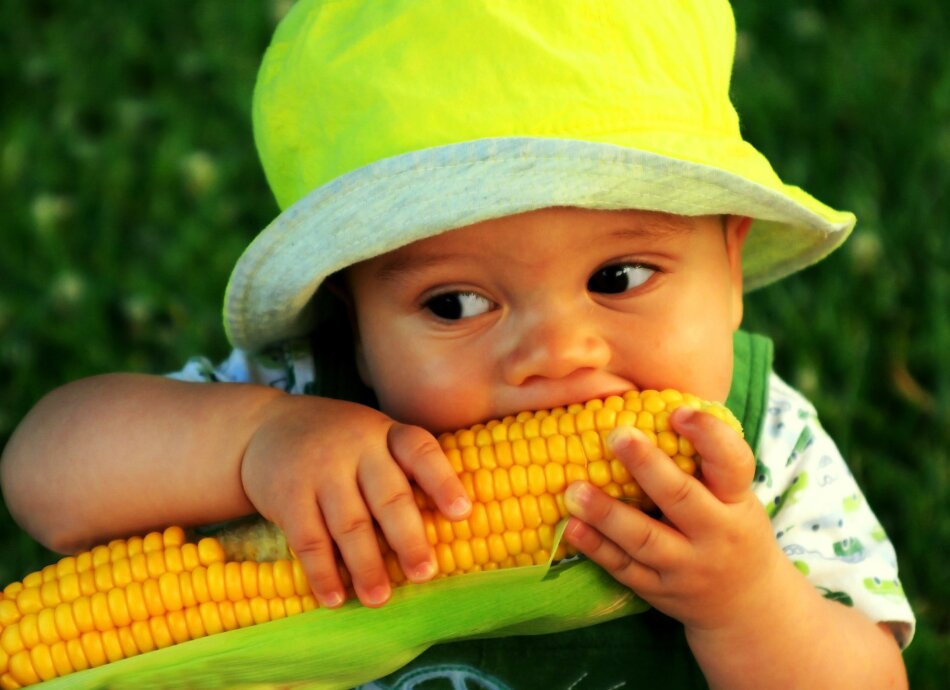
Your child needs to eat a variety of foods to support their wellbeing, growth and development. They are still growing and developing, so they need all the essential nutrients for them to grow healthily.
Other benefits of healthy eating for your child include:
- maintaining a healthy weight and reducing the risk of health problems such as obesity
- lowering risk of mental health conditions such as depression and anxiety
- supporting your child’s wellbeing and stabilising their mood.
Read our tips for healthy eating in children.
Provide your child with a variety of foods from these 4 food groups every day:
- vegetables and fruit
- grain foods
- proteins (legumes, nuts, seeds, fish and other seafood, eggs, poultry or red meat with fat removed)
- milk and milk products.
While it’s good to choose a variety of foods, it’s also important to keep food serving sizes appropriate for your child’s body size and energy levels. A serving or portion is a standard amount of food defined by weight. The amount your child needs can be spread out during the day as needed.
Children have smaller stomachs than adults, so they need smaller meals and snacks. Too large a serving of some foods can cause weight gain.
The recommended serving size for each food group is different for different ages and genders.
Vegetables and fruit
Vegetables and fruit contain fibre, carbohydrate, vitamins and minerals. They are best eaten with most meals and are a great snack option.
- Buy fruit and vegetables in season to reduce cost.
- Canned and frozen options are just as nutritious and can be cheaper options. Choose fruit canned in fruit juice rather than in syrup.
- Include a range of raw and cooked vegetables and fruit in meals and snacks.
- You get different nutrients from different coloured fruits and vegetables so try to offer a variety, eg, beetroot or plum, tomato or strawberry, broccoli or kiwifruit, carrot or orange.
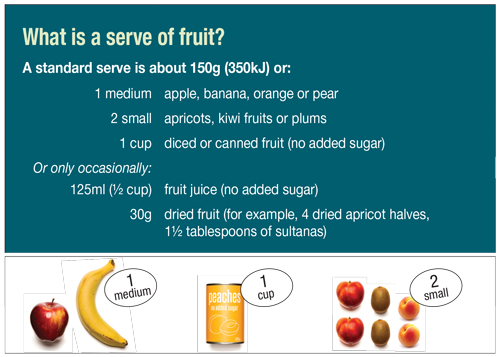
Image Credit: National Health and Medical Research Council, Australia
Fruit juice and dried fruit are not included in this category as they are high in sugar, which can cause problems with teeth. If you do offer these to your child, limit them to 1 serving each week and follow this guidance:
- Offer small quantities of dried fruit, eg, 3 dried apricots or 2 tablespoons of raisins (25g dried fruit).
- Dilute juice with water so it is half juice and half water.
- Offer these with other food, rather than in between meals. Cheese is a good option as it can help get the dried fruit out of teeth.
| Age group | Vegetables | Fruit |
| 1–2 year olds | 2–3 servings per day | Half serving per day |
| 2–3 year olds | At least 2.5 servings per day | At least 1 serving per day |
| 4–8 year olds | At least 4.5 servings per day | At least 1.5 servings per day |
| 9–11 year olds | At least 5 servings per day | At least 2 servings per day |
| 12–13 year olds | At least 5.5 servings for boys and 5 servings for girls per day | At least 2 servings per day |
| 14–18 year olds | At least 5.5 servings for boys and 5 servings for girls per day | At least 2 servings per day |
Grain foods
Children should eat these foods every day since these are a high quality energy source. You should offer mostly wholegrain foods from 2 years old. Wholegrain and high fibre grains provide energy, fibre, vitamins and minerals.
- These foods include whole grain bread, whole grain cereals like oats (porridge) and whole wheat biscuits, brown rice and wholemeal pasta.
- Breads and cereals can make healthy snacks for children.
- Choose wholegrain options (eg, brown bread with whole grains, rolled oats, brown rice) as much as possible.
| Ages | Grain foods |
| 1–2 year olds | 4 servings per day |
| 2–3 year olds | At least 4 servings per day |
| 4–8 year olds | At least 4 servings per day |
| 9–11 year olds | At least 5 servings for boys and 4 servings for girls per day |
| 12–13 year olds | At least 6 servings for boys and 5 servings for girls per day |
| 14–18 year olds | At least 7 servings per day |
Legumes, nuts, seeds, fish and other seafood, eggs, poultry or red meat with fat removed
These foods contain protein, which is vital for children’s development. They also include fat and a range of vitamins and minerals – including iron, which is important for your blood and brain.
- Your body gets iron from lean meats, chicken and seafood more easily than from plants.
- To help your body take in iron, have foods high in vitamin C with meals. Try fresh fruits and vegetables, like oranges, kiwifruit, tomatoes and broccoli as these are all full of vitamin C.
- To lower fat levels, try to choose lean meat, remove bits of fat you can see on meat and chicken, and take off chicken skin after cooking.
- Children should eat some fat, but too much can cause health issues later on in life.
- Restrict processed meats, like luncheon, bacon, salami and ham, as they are often high in fat, salt and preservatives.
- Start adding lentils, chickpeas or beans to meals such as casseroles, spaghetti bolognese and curries to introduce children to these as part of a mixed meal.
Note: To reduce the risk of choking, don’t give small, hard foods such as whole nuts and large seeds until children are at least 5 years old.
| Ages | Legumes, nuts, seeds, fish and other seafood, eggs, poultry or red meat with fat removed |
| 1–2 year olds | 1 serving per day |
| 2–3 year olds | At least 1 serving per day |
| 4–8 year olds | At least 1.5 servings per day |
| 9–11 year olds | At least 2.5 servings per day |
| 12–13 year olds | At least 2.5 servings per day |
| 14–18 year olds | At least 2.5 servings per day |
Milk and milk products
Milk contains energy, protein and a range of vitamins and minerals including calcium. Children and pre-schoolers need milk and milk products so they can grow healthy bones and teeth.
- When children reach 2 years old, you can begin to slowly introduce low-fat (yellow or green lid) or reduced-fat (light blue lid) milk and milk products.
- Try to encourage children who don’t drink milk to eat other milk products like yoghurt, fruit smoothies and cheese.
Limit milk to 2 cups (500ml) each day for young children. Drinking too much milk may fill them up and they may not eat enough food to get the nutrients they need.
| Ages | Milk and milk products |
| 1–2 year olds | 1-1.5 servings per day |
| 2–3 year olds | At least 1.5 servings per day |
| 4–8 year olds | At least 2 servings for boys and 1.5 servings for girls per day |
| 9–11 year olds | At least 2.5 servings for boys and 3 servings for girls per day |
| 12–13 year olds | At least 3.5 servings per day |
| 14–18 year olds | At least 3.5 servings per day |
The following links provide further information about food groups and serving size for children. Be aware that websites from other countries may have information that differs from New Zealand recommendations.
Average recommended number of serves calculator(external link) Eat For Health, Australia
Healthy eating for babies and toddlers from birth to 2 years old(external link) HealthEd, NZ, 2021
Eating for healthy children aged 2 to 12(external link) HealthEd, NZ, 2023
Healthy eating for young people(external link) HealthEd, NZ, 2021
Apps
Resources
Lunchbox ideas(external link) Heart Foundation, NZ
Choose a balance of healthy food every day poster [JPG, 147 KB] Ministry of Health and Health Promotion Agency, NZ, 2020
Eating for healthy babies & toddlers(external link) HealthEd, NZ, 2021
Eating for healthy children aged 2–12 years(external link) HealthEd, NZ, 2023
Supporting young children to eat well(external link) Health Promotion Agency, NZ, 2021
Healthy eating for young people(external link) HealthEd, NZ, 2021
Planning a Menu for a Early Learning Service(external link) Fuelled 4 Life, Heart Foundation, NZ
References
- Healthy eating guidelines for New Zealand Babies and Toddlers (0-2 years old)(external link) NZ, 2021
- New serving size advice(external link) Ministry of Health, NZ 2020
- Food and nutrition guidelines for healthy children and young people aged 2 to 18 years – a background paper(external link) Ministry of Health, NZ, 2015
Brochures
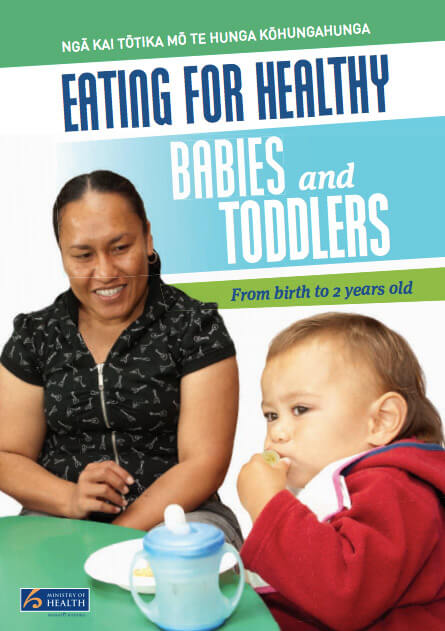
HealthEd, NZ, 2021
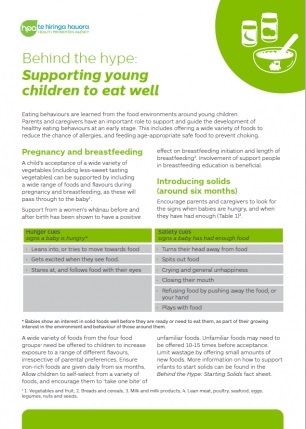
Health Promotion Agency, NZ, 2021
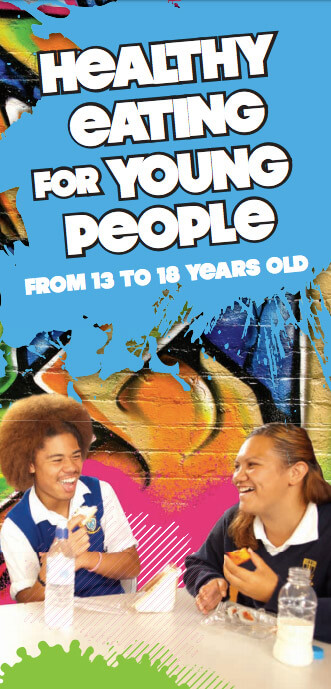
HealthEd, NZ, 2021
Credits: Healthify editorial team. Healthify is brought to you by Health Navigator Charitable Trust.
Reviewed by: Amanda Buhaets, Auckland DHB Liaison Dietitian
Last reviewed:
Page last updated:





